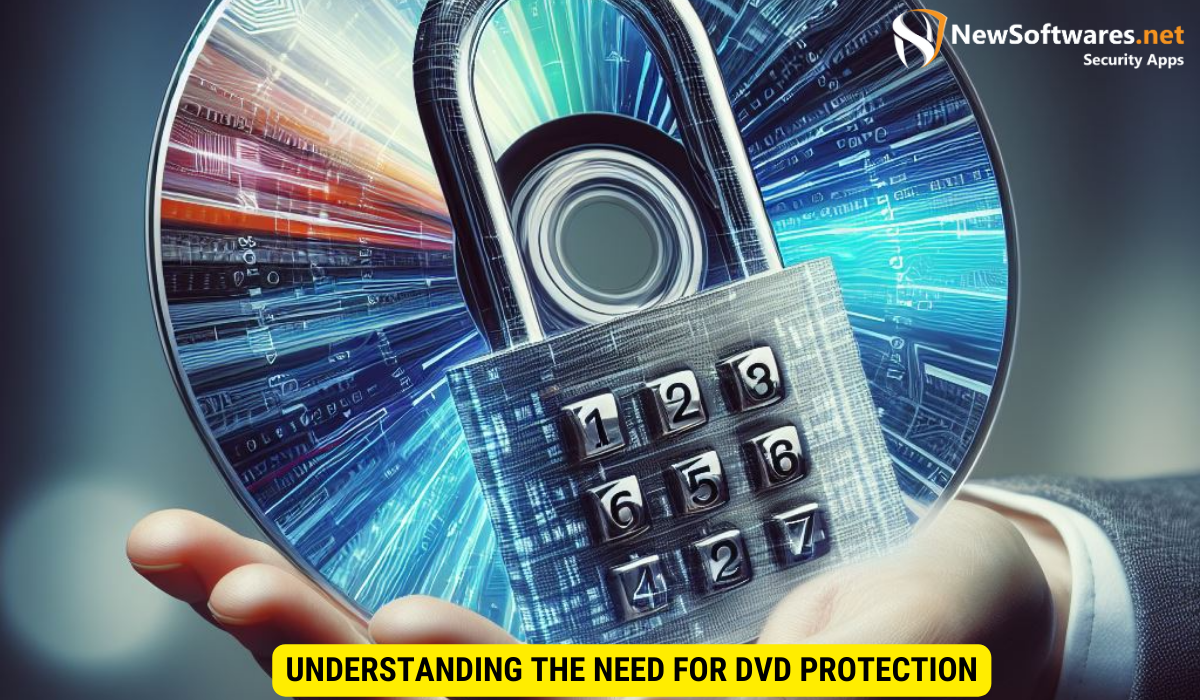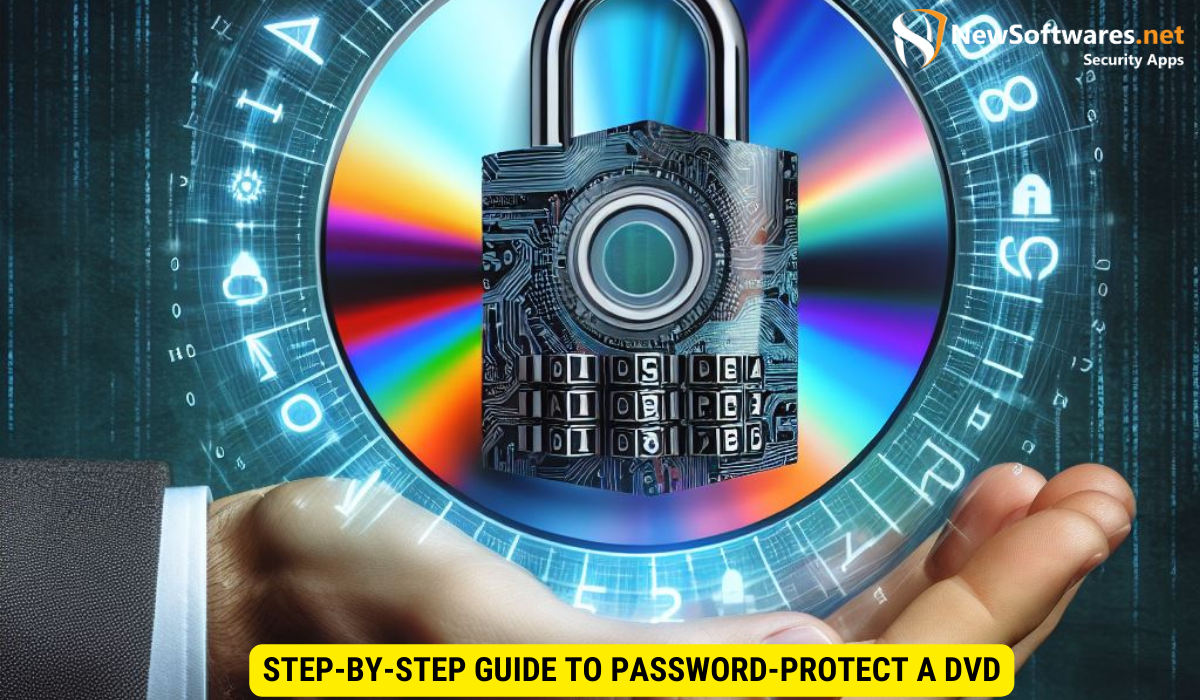Password-protecting a DVD adds an extra layer of security to safeguard personal and sensitive data. Follow these steps to enhance DVD security and prevent unauthorized access.
In this digital age, protecting your personal data is of utmost importance. Whether it’s sensitive information or cherished memories, keeping them safe from prying eyes is essential. One such method is password-protecting your DVDs. Together, we will explore the need for DVD protection, the basics of DVD password protection, a step-by-step guide on how to password-protect a DVD, troubleshooting common issues, and tips on maintaining DVD security.
Understanding the Need for DVD Protection

With the increasing popularity of DVDs, the need for protection becomes evident. Password protection adds an extra layer of security to your DVDs, ensuring that only authorized individuals can access the contents. By safeguarding your DVDs, you can protect valuable data, confidential documents, or personal videos from falling into the wrong hands.
Moreover, in today’s digital age where cyber threats are rampant, securing your DVDs with password protection is more critical than ever. Hackers and malicious actors are constantly looking for ways to exploit vulnerabilities and gain unauthorized access to sensitive information. Implementing password protection on your DVDs is a proactive measure to safeguard your data and maintain confidentiality.
The Importance of Password Protection
Password protection is crucial to maintain the privacy and confidentiality of your DVD content. It prevents unauthorized users from accessing sensitive information and helps you maintain control over who can view your DVDs. Additionally, password protection can give you peace of mind, knowing that your data is secure and protected.
Furthermore, password protection can also be beneficial in professional settings where confidential business data is stored on DVDs. By restricting access to authorized personnel only, organizations can prevent data breaches and ensure that sensitive information remains confidential and secure.
Risks of Unprotected DVDs
Leaving your DVDs unprotected poses various risks. Anyone who gets hold of an unprotected DVD can easily access its contents, potentially leading to privacy breaches, data theft, or unauthorized distribution. Protecting your DVDs with passwords adds a barrier that deters unauthorized access and mitigates these risks.
Additionally, in scenarios where DVDs are used to store personal memories such as family videos or special events, the emotional value attached to these contents makes it even more crucial to protect them. Password protection not only safeguards the data from external threats but also ensures that cherished memories remain private and accessible only to those intended to view them.
Basics of DVD Password Protection
Before diving into the process of password-protecting your DVDs, it’s essential to understand the basics of DVD password protection.
DVD password protection is a crucial aspect of safeguarding your digital content from unauthorized access. By implementing password protection on your DVDs, you add an extra layer of security to prevent sensitive information or personal media from falling into the wrong hands.
What is DVD Encryption?
DVD encryption is a process that encodes the contents of a DVD in a way that requires an encryption key or password to decrypt and view. It ensures that only individuals with the correct password can access the protected content.
Encryption algorithms play a vital role in DVD protection by converting the data on the disc into a format that is unreadable without the decryption key. This method of data security is widely used in various industries to protect confidential information and intellectual property.
Different Types of DVD Protection
There are various methods of DVD protection, including DVD encryption software, DRM (Digital Rights Management), or using disc authoring software with password protection features. Each method has its own advantages and considerations, depending on your specific needs and requirements.
DRM, for example, not only restricts access to the DVD content but also controls how the content can be used, preventing unauthorized copying or distribution. On the other hand, disc authoring software with password protection features allows you to set access restrictions on individual DVDs, providing a customizable solution for content protection.
Step-by-Step Guide to Password-Protect a DVD

Now that you understand the basics, let’s dive into the step-by-step process of password-protecting a DVD.
When it comes to protecting sensitive data on DVDs, encryption is a crucial step in safeguarding your information from unauthorized access. By encrypting your DVD, you add an extra layer of security that ensures only those with the correct password can view the contents.
Choosing the Right Software
The first step is to choose a reliable DVD encryption software that aligns with your specific needs. Research and compare different software options, considering factors such as user-friendliness, encryption strength, compatibility, and reviews from trusted sources.
Look for software that offers advanced encryption algorithms such as AES-256, which provides robust protection against potential security breaches. Additionally, consider whether the software offers additional features such as batch encryption for multiple DVDs or the ability to create self-decrypting DVDs for convenient sharing.
Setting Up a Strong Password
Once you have selected the software, the next step is to set up a strong password. Utilize a combination of uppercase and lowercase letters, numbers, and special characters. Avoid using easily guessable passwords and ensure your password is unique and memorable only to you.
Remember to store your password in a secure location or use a reputable password manager to prevent the risk of forgetting or losing access to your encrypted DVD.
Encrypting Your DVD
With the software installed and a strong password in place, follow the instructions provided by the software to encrypt your DVD. The process typically involves selecting the DVD drive, choosing the encryption settings, and entering the password. Once completed, your DVD will be protected by the password you set.
Double-check the encryption settings before finalizing the process to ensure that the level of security meets your requirements. Some software may offer additional options such as setting expiration dates for access or enabling watermarks to deter unauthorized duplication.
Troubleshooting Common Issues
While password-protecting a DVD is generally straightforward, you may encounter certain issues along the way. Here are a few common problems and solutions to help troubleshoot:
Forgotten Password Solutions
If you forget your password, most DVD encryption software does not provide a password recovery option due to security reasons. In such cases, the only solution is to reset the password, which may result in permanent loss of data. Hence, it is crucial to store your passwords securely and consider creating backup copies of your protected DVDs.
Dealing with Encryption Errors
If you encounter encryption errors during the process, ensure that your DVD is clean and free from scratches. Additionally, double-check the software settings and try again. If the problem persists, consult the software’s user manual or contact their support team for assistance.
Maintaining DVD Security
Once you have successfully password-protected your DVD, it’s important to implement practices to maintain DVD security.
Regularly Updating Your Password
To ensure optimal security, consider updating your password periodically. Regularly changing your password reduces the risk of unauthorized access and ensures continued protection of your DVDs.
Keeping Your Software Up-to-Date
Stay vigilant about the software you use for DVD password protection. Keep it updated with the latest patches and versions to benefit from enhanced security features and bug fixes. Regularly check for updates on the software provider’s website or enable automatic updates if available.
These simple steps can go a long way in maintaining the integrity and security of your password-protected DVDs. By understanding the importance of DVD protection, following the step-by-step guide, and addressing common issues, you can keep your valuable data safe from unauthorized access.
Key Takeaways
- Password-protecting your DVDs adds an extra layer of security to safeguard personal and sensitive data.
- DVD encryption is a process that encodes DVD contents, requiring a password to decrypt and view.
- Choosing the right software and setting up a strong password are crucial in the DVD protection process.
- Maintaining DVD security involves regularly updating passwords and keeping software up-to-date.
- Being aware of common issues and their solutions can help troubleshoot any problems during the DVD protection process.
FAQs
Conclusion
Password-protecting your DVDs is an effective way to ensure the security and privacy of your valuable data stored on optical discs. By understanding the need for DVD protection, grasping the basics of DVD password protection, and following a step-by-step guide, you can enhance the security of your DVDs and prevent unauthorized access. Stay proactive in maintaining DVD security by regularly updating passwords and keeping your software up-to-date. With these measures in place, you can enjoy the peace of mind that comes with knowing your sensitive information is safe.
